Cusco
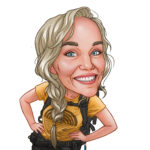
By Jaimy de Vries
Cusco is known as the archaeological capital of the American continent. It is home to a storied history that included the rise and fall of the Inca Empire followed by the invasion of Spanish conquistadors in the early 1500s. Today, you can see remains of both eras in the narrow city streets. From old baroque Spanish cathedrals to exquisite stone masonry from the Inca’s. It’s a rare collusion of Andean, Inca and Spanish styles that makes Cusco unique. For almost a month I stayed in Cusco and I never got bored. There is so much to do and see, with its main attraction Machu Picchu.
The first thing I saw in Cusco were the brown-orange rooftops. From my accommodation, that was in the district Santa Ana that’s around 200 meter higher than downtown, I had a panoramic view over the city. Having a daily breakfast on the rooftop terrace was an amazing start of the day. Just looking over the city and wandering what I will do that day. During my stay there were two local storms above the downtown area, while we were enjoying the sun in Santa Ana. The storm didn’t reach us. But because the sun was shining and there was a local storm I saw beautiful rainbows over the city.
Cusco has beautiful buildings, but just like the rest of Peru it has many unfinished building and that simply doesn’t look pretty. The houses are made of brick with mortar and mostly with orange corrugated sheets. But if you stay in the downtown area are you won’t see much of these unfinished buildings. In this area most of the houses are well maintained colonial houses from the Spanish conquistadors.
Around the city there are many temples to visit: like saqsaywaman (pronounce it as sexy woman), temple de la Luna and a little bit more far away: the sacred valley.
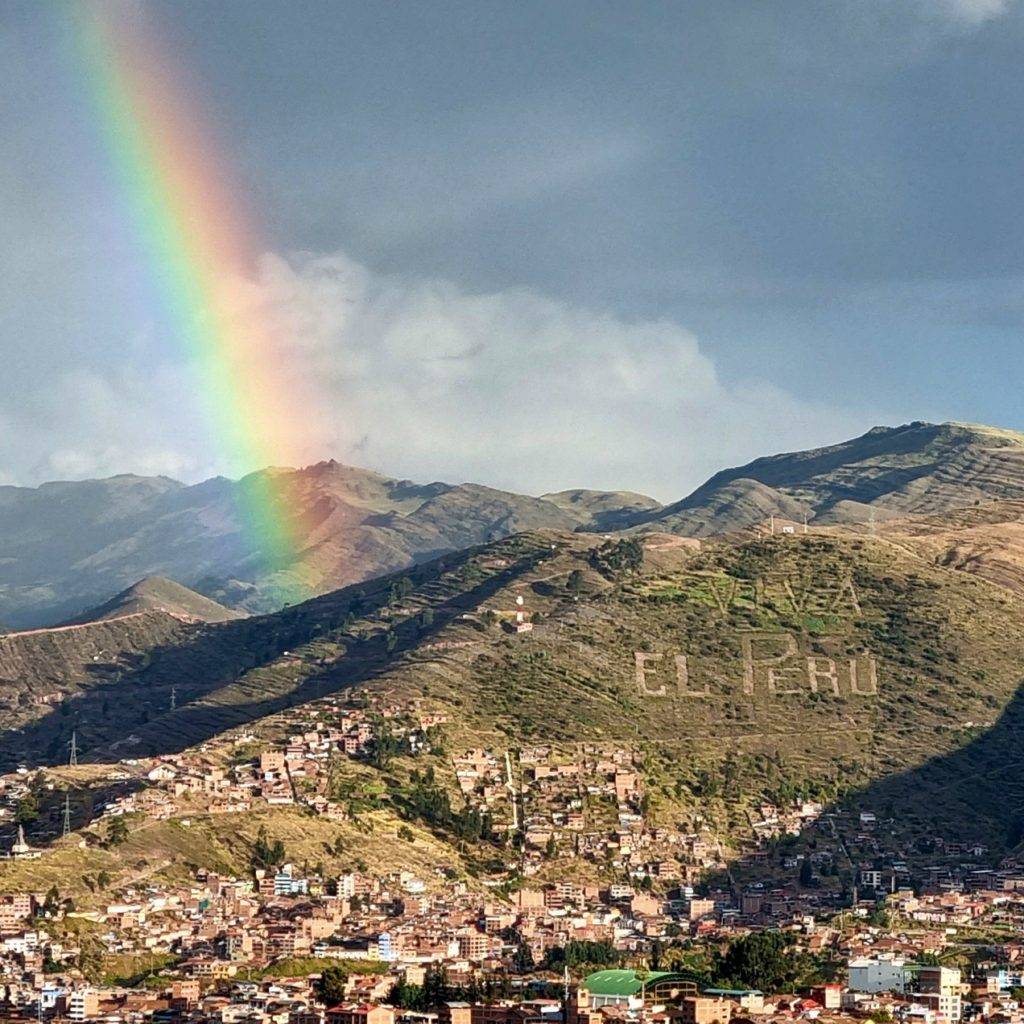
View of Cusco

Regular houses in Peru
City tour
The Plaza de Armas is the main square of the downtown area. From here it’s easy to walk to other parts of the city and visit the main attractions. And from the plaza there are lots of tour agencies who are happy to offer you a one. But you can simply walk around yourself, because most of the main attractions are on walking distance. And otherwise for a small amount you can grab a taxi.
We took a panoramic bus tour for a small amount (30 soles) around the old downtown area and uphill to the Christ statue and a small farm. But there are also lots of good free walking tours you can join. This is a fun way to learn more about the sights, best places and restaurants.
Places that are worth your visit:
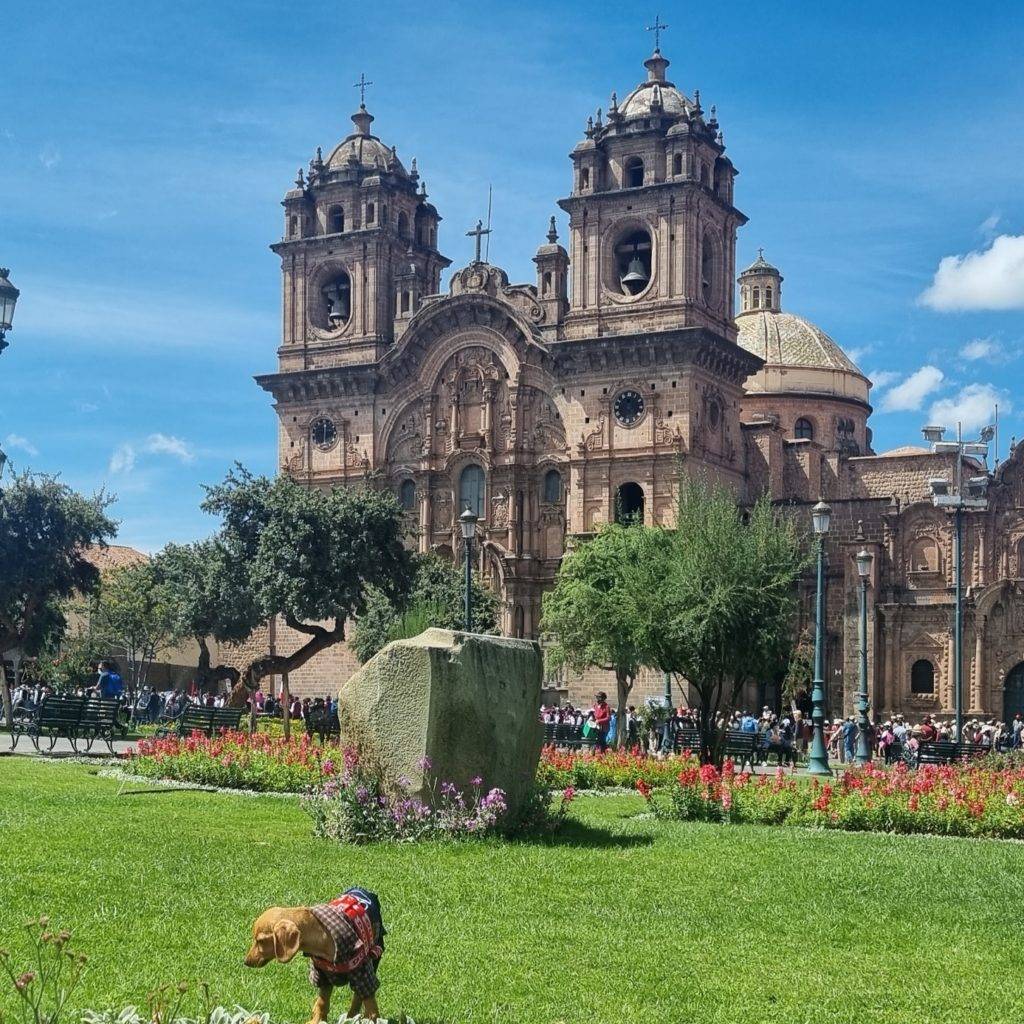
Cusco Cathedral
- Plaza de Armas. Has a nice botanical garden and stairs. A nice place to simply just look at the crowd passing by. At night there are lots of people selling souvenirs for a cheap price. Make sure to take a short visit at the Cathedral.
- San Pedro Market. A must-see. A market full of life and a nice way to get to known the Peruvian culture a bit. They sell fresh Peruvian produce, meat and grains as well as souvenirs, spiritual supplies and locals enjoying the ‘menu del dia’ or daily menu at the food stalls. But, San Pedro is the tourist place...if you walk behind San Pedro to Cascaparo you have the real (and cheaper) market where all the locals by their food and clothing.
- San Blas district. A charming district in Cusco full of art and nice cafe's. One of the best cafe's is Jack's Cafe, a great place for breakfast or lunch. Here you can see the amazing stone masonry and Uriel (the guy on the first picture below) is the guard of these walls.
- Qoricancha Temple. The Qoricancha Temple was the most important Inca Temple in Cusco and was dedicated to Inti the Sun God. After the Spanish conquest, the colonists built the Santo Domingo Church on the site to show their dominance of the local people. Guided tours highlight the interesting mix of two archaeological styles with Inca stonework and colonial architecture
- Temple Saqsaywaman. An Archeological site of the Inca Empire overlooking over Cusco on a steep hill. You need a BTG (tourist card) to enter this site. This ticket cost 130 soles.
- Planetarium. The Hanan Pacha (means in Inca Astronomy in quechua) was sacred for the Inca's. With their "astronomy" knowledge they could predict if there will be a good harvest coming. You can't call it astronomy because it was not scientific proven, it is more their magical thinking. It's interesting to hear more about this. At the planetarium they also explain more about the kosmos and the constellations.
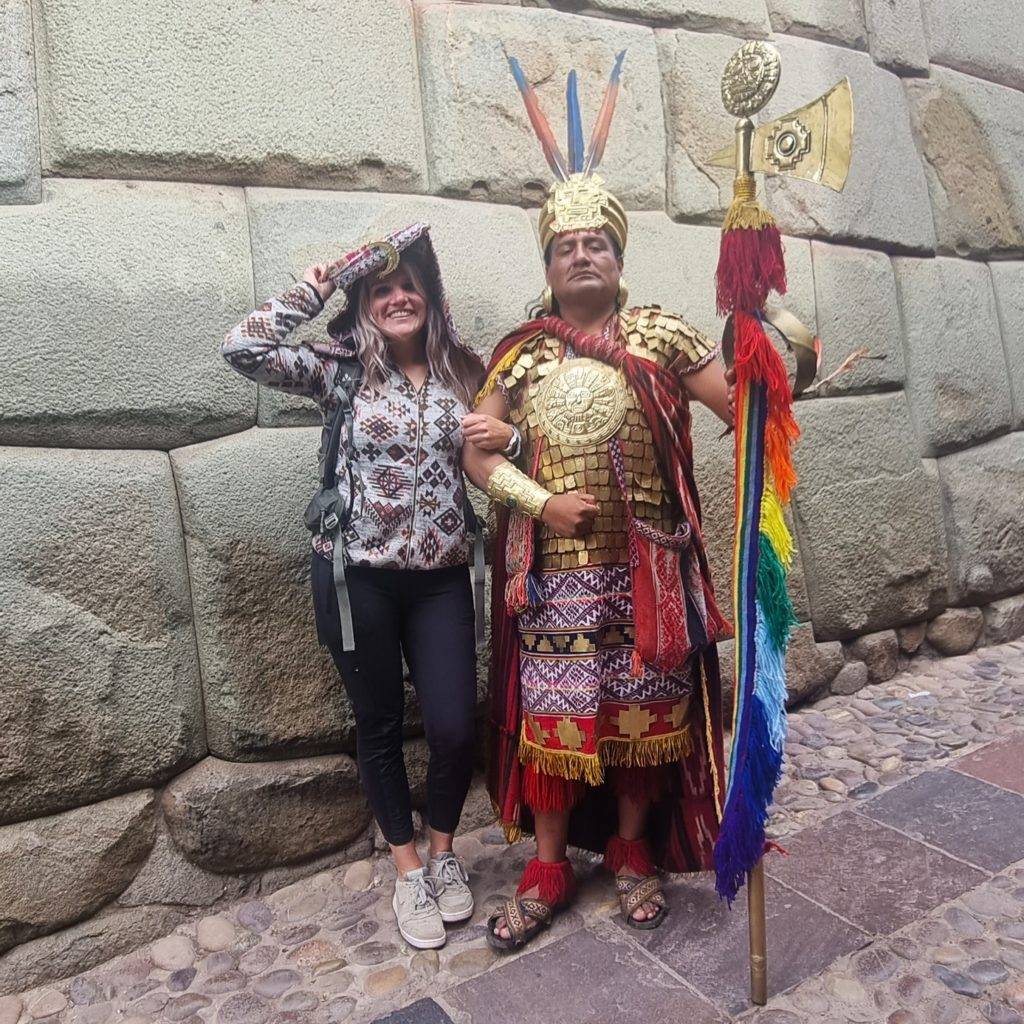
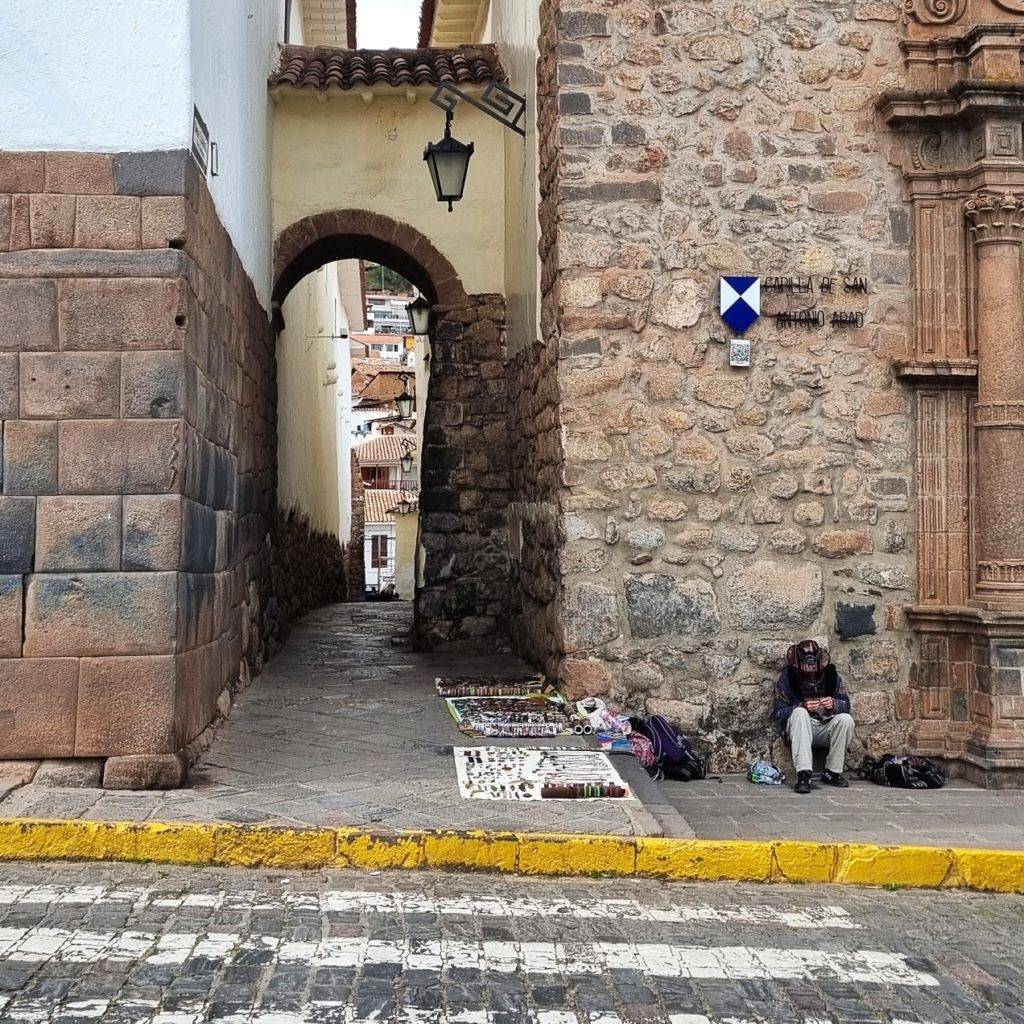
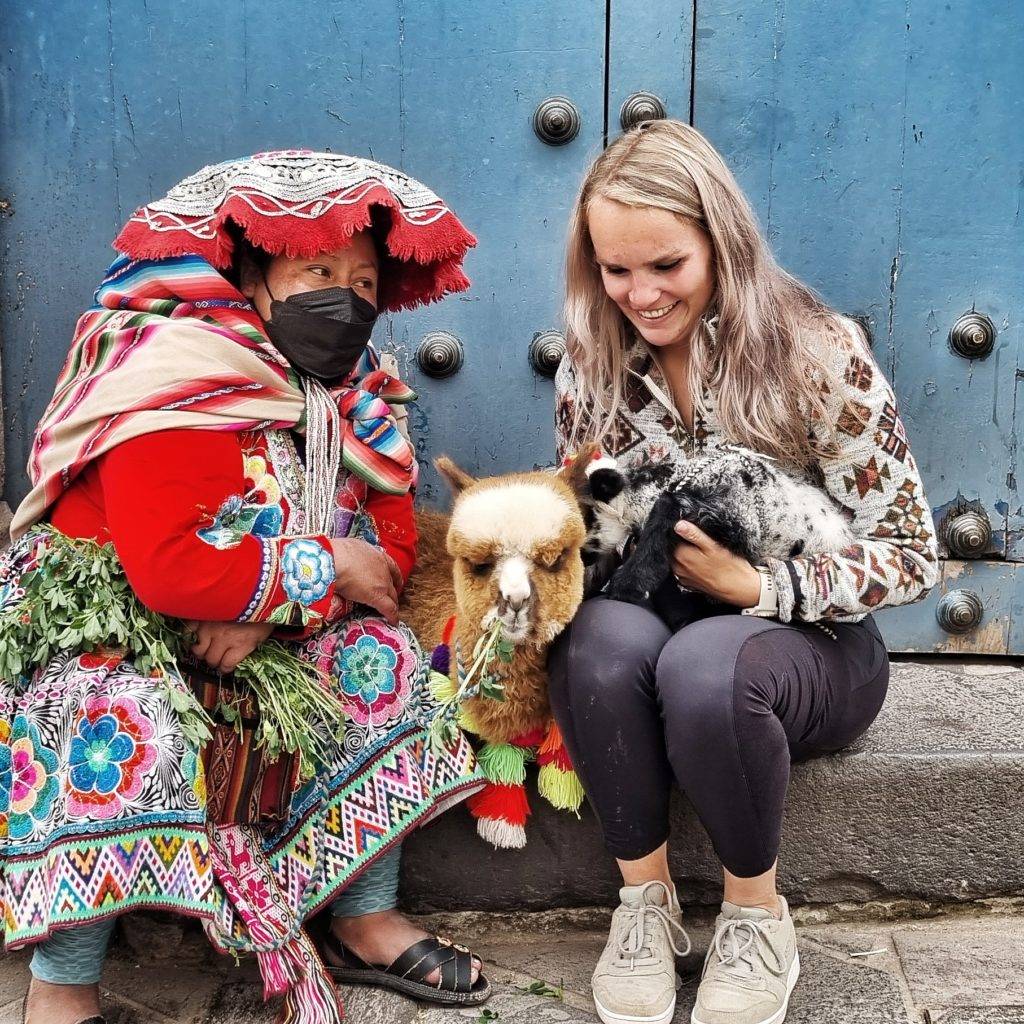
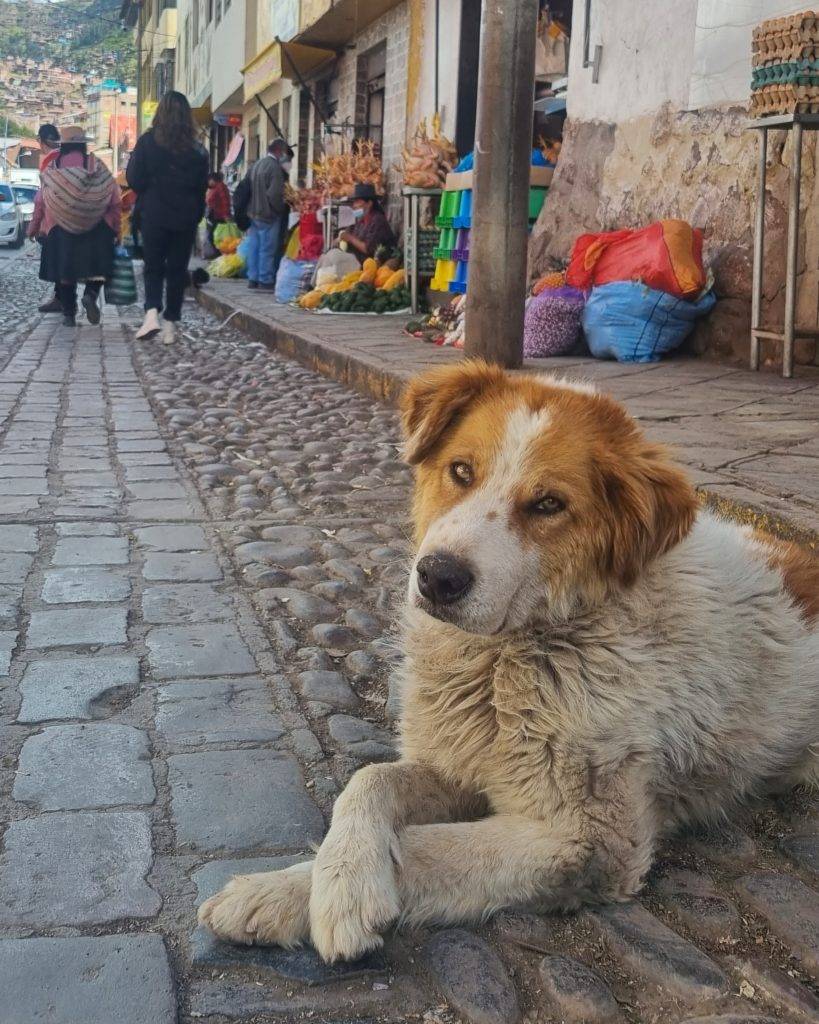

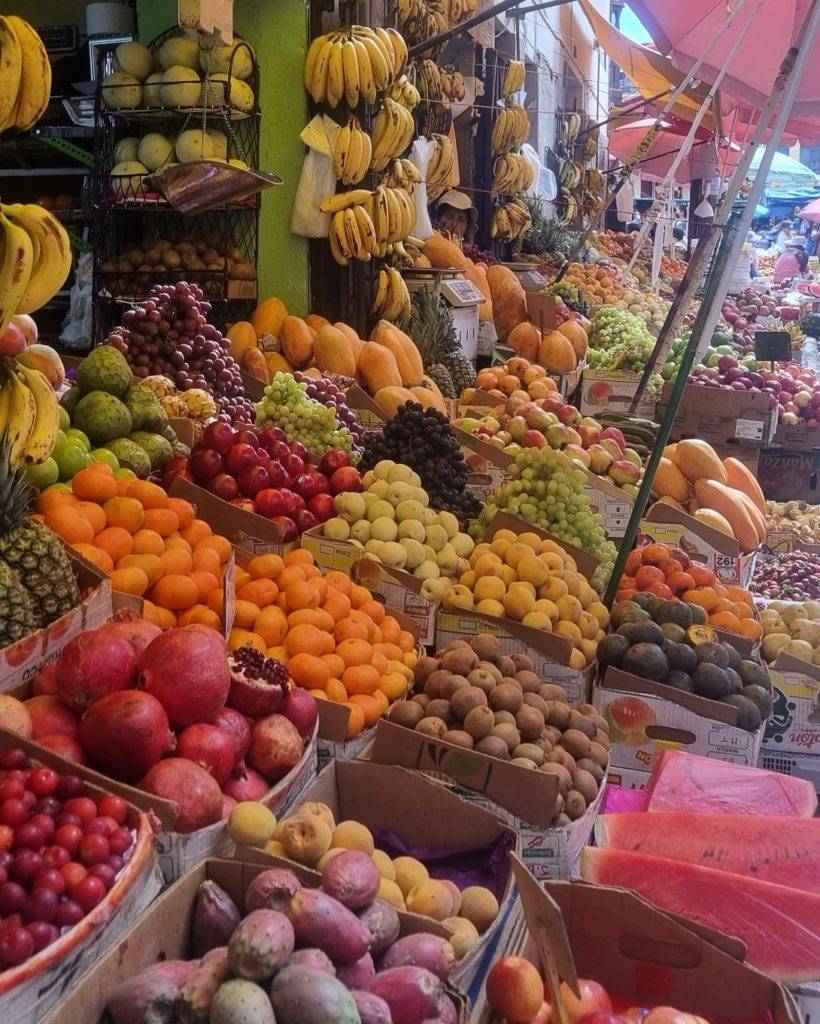
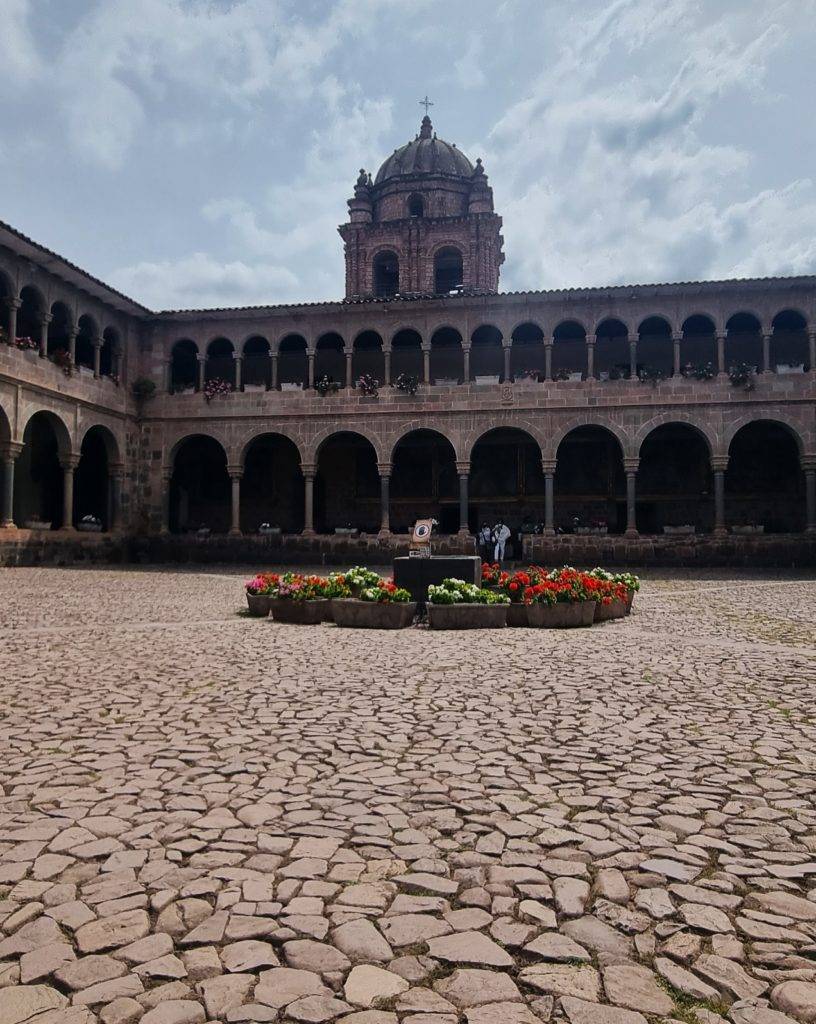
Cooking class
Together with my friend Al I took a cooking class at the chocolate factory. Instead of cooking with chocolate we made traditional dishes. But first we did some grocery shopping at the San Pedro market. There was a market festival and everyone was so happy, it was so fun! We made three dishes: Ceviche, Lomo Saltado and Pisco sour. It was a professional cooking class and we had so much fun. We ended the cooking class with a nice chocolate fondue and fresh fruit from the local market that we bought at San Pedro.
This trip is definitely a recommendation and you won’t go home on an empty stomach! Costs: 120 soles.
Peru has lots of locals dishes and you can all try them out here in Cusco. I tried all of them, except Guinea pig, my heart couldn’t bear the burden to eat one. They’re pets back home and just so cute. I asked and from one guinea pig they can make 4 meals. So sad. But here are the top dishes to try out in Cusco:
- Pisco sour
- Chicha Morada
- Local fruits, like chirimoya, aguaymanto, pcay, maracuya
- Guinea pig (Cuy)
- Ceviche
- Lomo Saltado
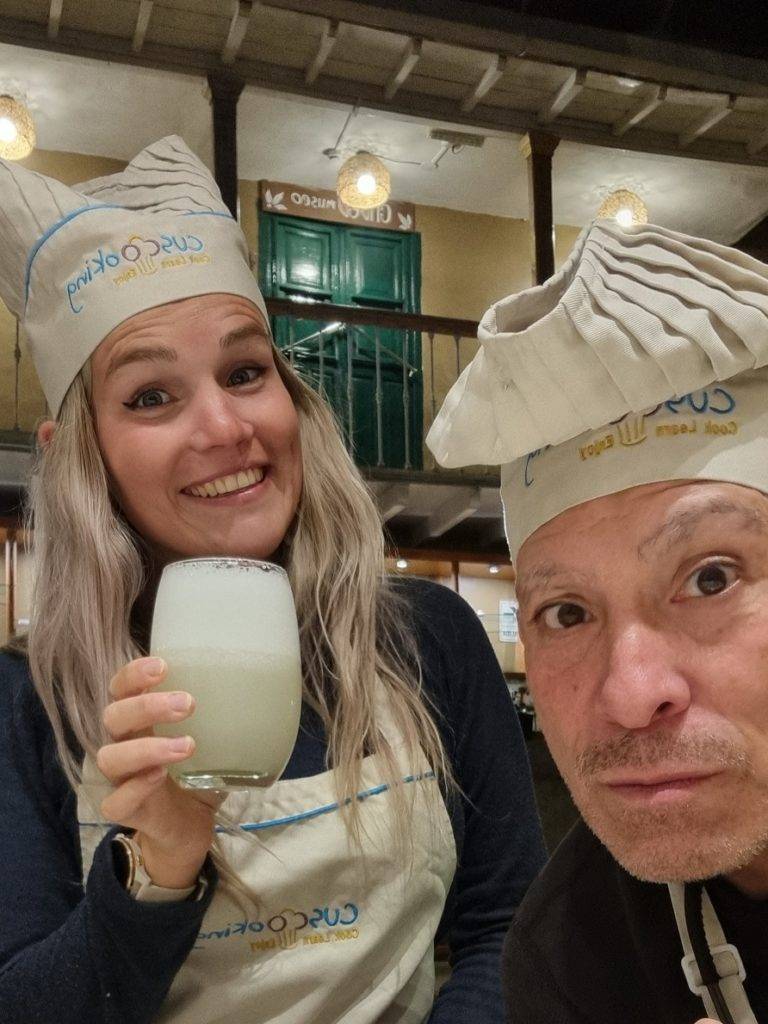
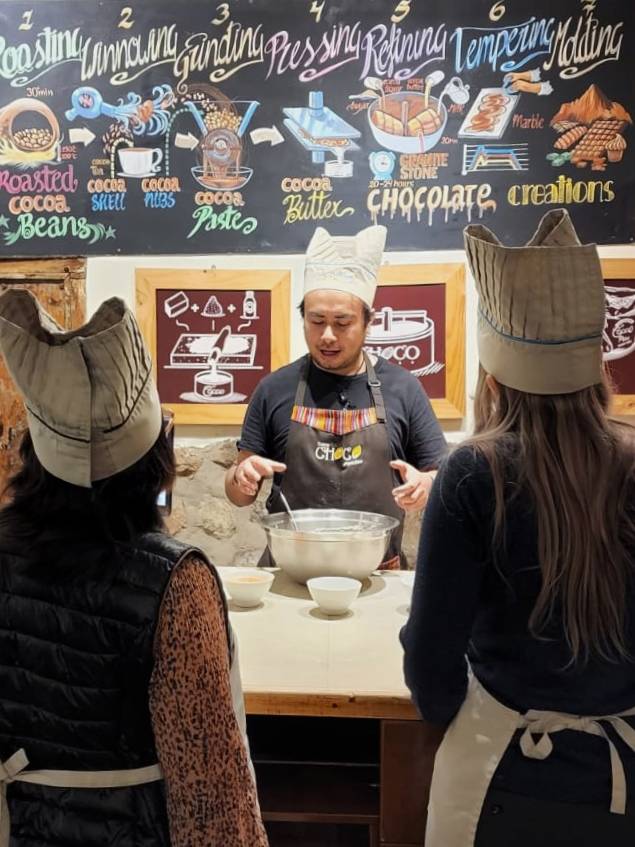
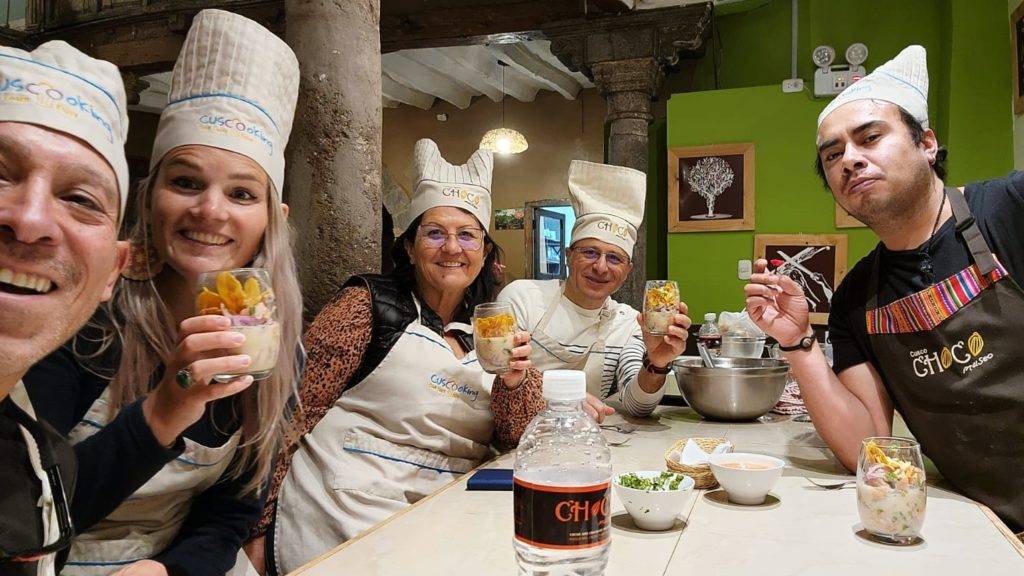
Pottery class
The Andean culture is known for its outstanding technologies in textiles and architecture, but also in ceramics. And how great is it to get a ceramic class of an Andean local who finished art school. Of course we did this! First we made our own clay out of 3 types of stone (clay, volcanic and pumice rock), just like the (pre-)Incas did. I made a cup and a pot for a plant with a lama and Peruvian drawings. It costs 250 soles. Side note: you need to stay at least one week in Cusco, because the pottery needs to be baked and painted. So you need to go to the pottery class twice. You can book this tour with my friend Alex who offers good trips for a cheap price.
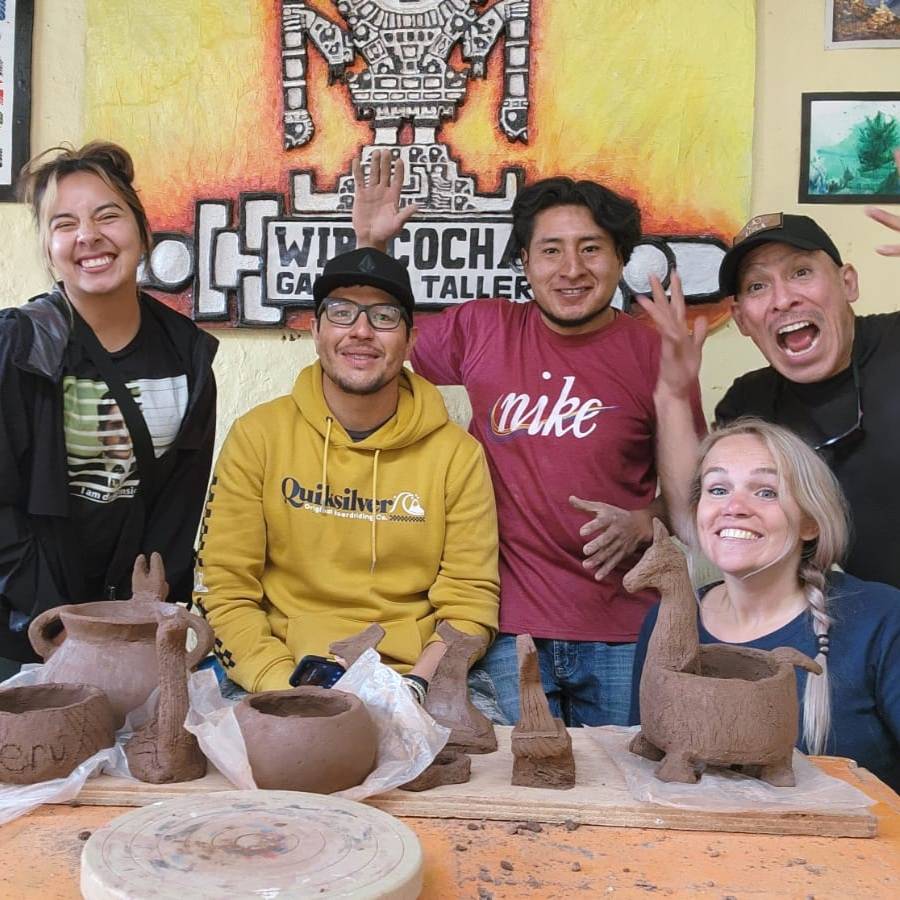
Horse riding
With a tour company close to the temple Saqsaywaman we went on a horseback riding tour through the Andean mountains and towards some archeological sites. First we got a small explanation how to ride a horse. The horses were lovely and well trained so it was quite easy. Then we took a ride higher to the mountains and saw a spectacular view over Cusco. We visited an Archeological site called the “Chaqan bibles balcony”. We climbed to the viewpoint and walked to a stone statue in the shape of the Chakana symbol. It’s always half of the symbol, because with the right sun fall you see the other half as a shadow. Close to this statue there was a lady selling necklaces with this symbol. We bought one, this must be one of the best places to buy them. Underneath an explanation about this symbol. After our visit to the first site we took another ride on the horse to our next destination: a cave! It was a long cave next to a river. It was necessary to put our shoes off and walk through a water stream of 30 cm deep. The water was freezing cold. But it was spectacular and worth the cold feet. Later we visited another cave, that’s part of the temple of the underworld, called: Uku Pacha, located in Zona-X. Then we headed back. It was a fun trip!
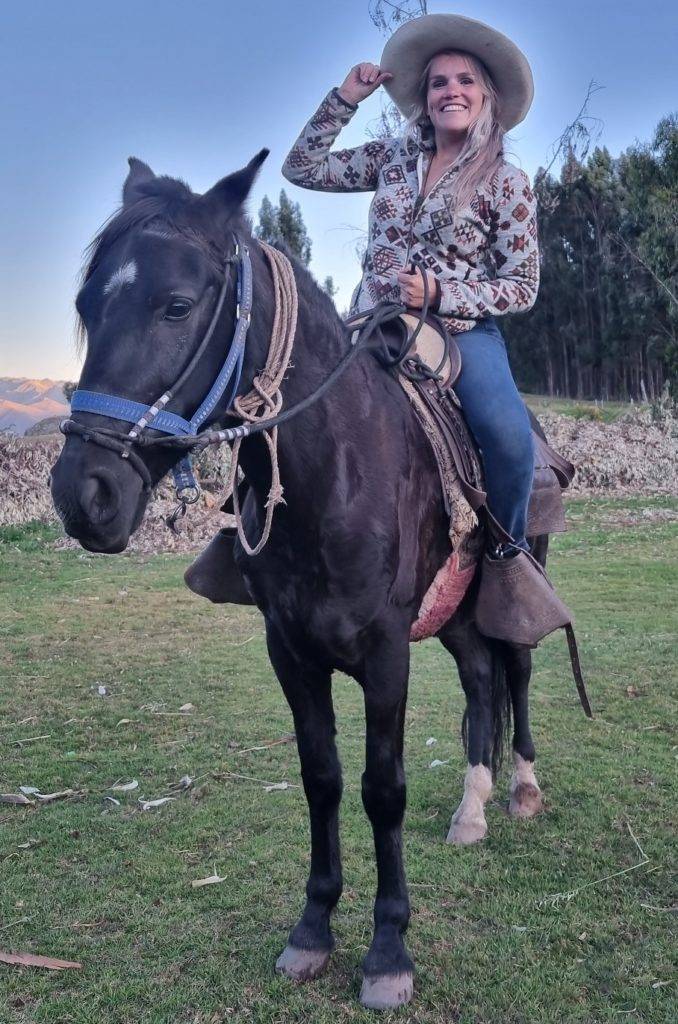
Chakana symbol
The chackana symbol, a stepped cross with four corners, is nothing less than the southern cross constellation. The Inca’s believed that was the centre of the Universe. But the Chakana has a symbolize meaning. Each of the three steps of one corner is believed to have meaning:
- The first quarter of the cross represents energetic tiers or worlds: The lower world (Uqhu Pacha) represented the underworld and death, the middle world (Kay Pacha) represented the world of human life and the upper world (Hanan Pacha) included the stars, celestial beings and gods
- The second quarter represents their revered animals, corresponding to these worlds:
- the snake, living underground, represented the lower world
- the puma, a powerful land animal represented the middle world
- the condor represented the upper world in the sky
- The third quarter symbolizes 3 commandments of Incas: don’t steal, don’t lie, don’t be lazy
- The fourth – the human principals: love and well doing, knowledge, work
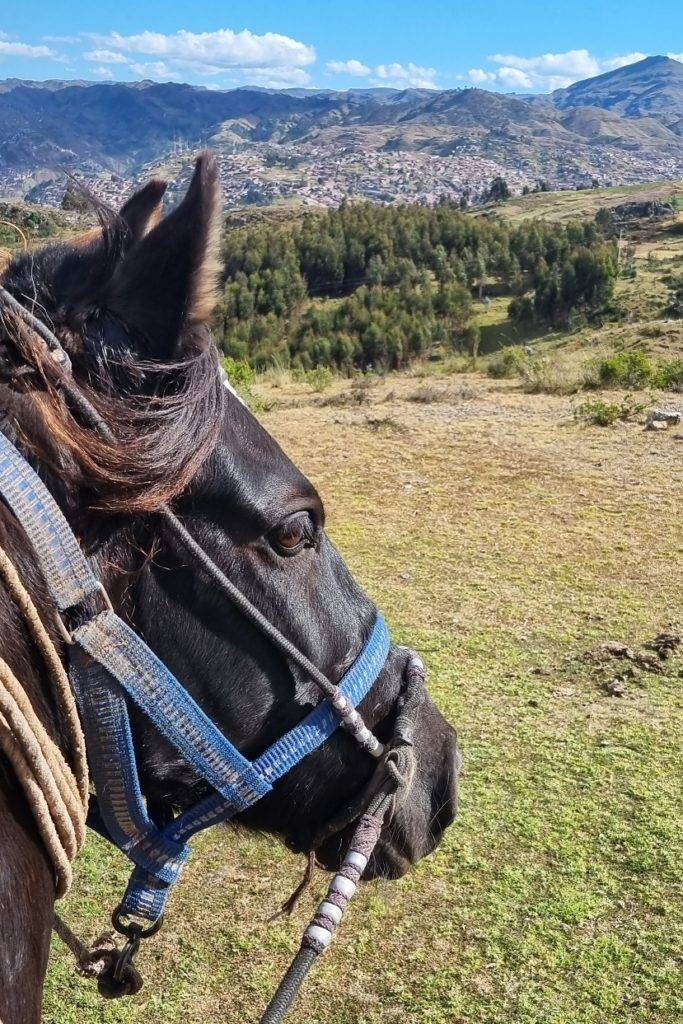
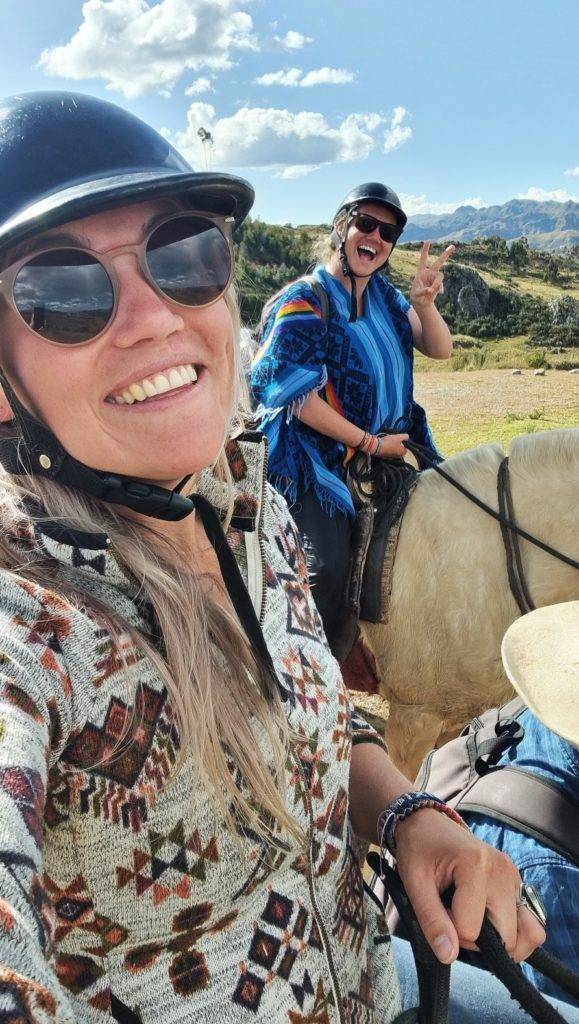
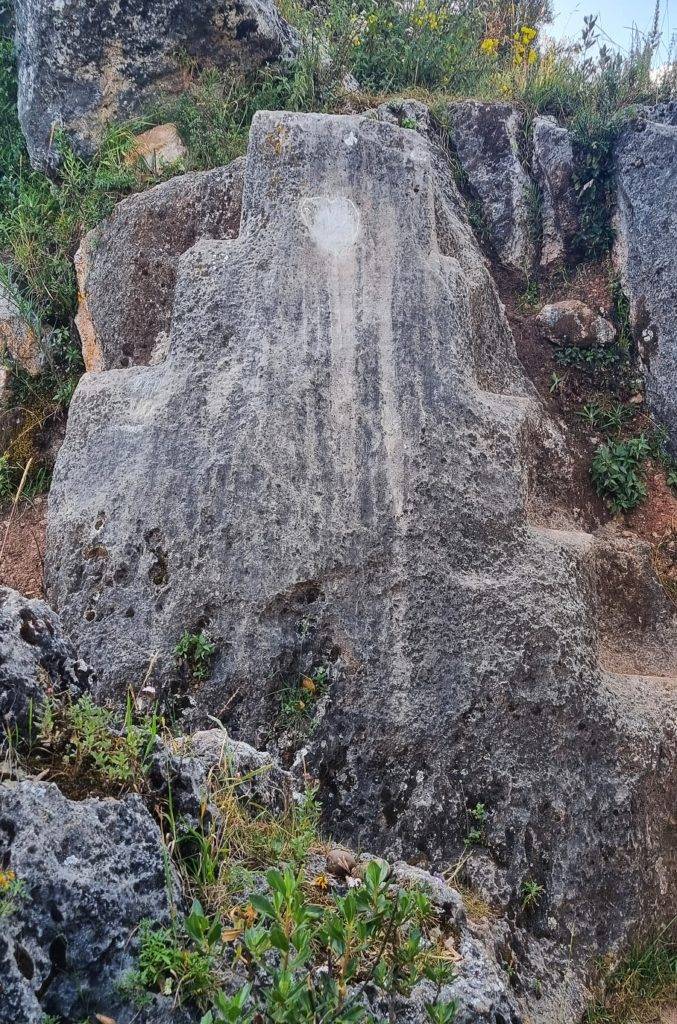
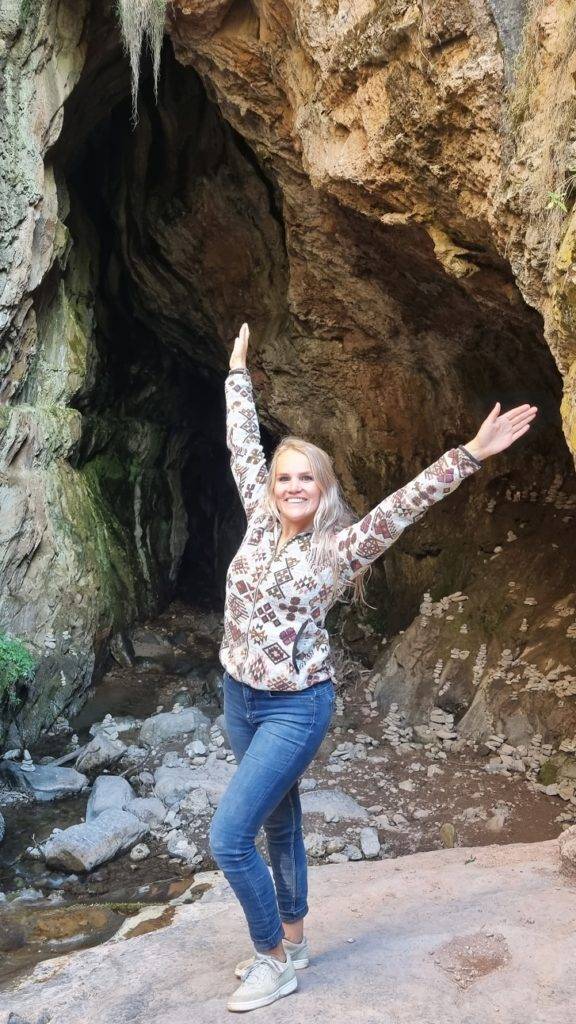
Hiking
From the locals and other travellers I got some tips about the best hikes around this area. Some are close like temple the La Luna. Others are more far away where transport is necessary (or you like the additional hike). The area around Cusco is amazing: high mountains, deep valleys, lots terraces and ruins, lots of green and moss covered rocks, but also lots of jungle. It’s very diverse.
Here’s my list of the best hikes in this area:
- Zone-X in Cusco (Temple de la Luna, Chaqan bibles balcony, Uku Pacha) - Free
- Inti Punku in Ollantaytambo - Free
- Seven lakes Ausangate - daytrip 40 USD
- Rainbow mountain & red valley - free or with tour for 60 USD
- Inca trail - only with tour for 600-1000 USD
- Salkantay - free of with tour for 210 USD
- Lares - free or with tour
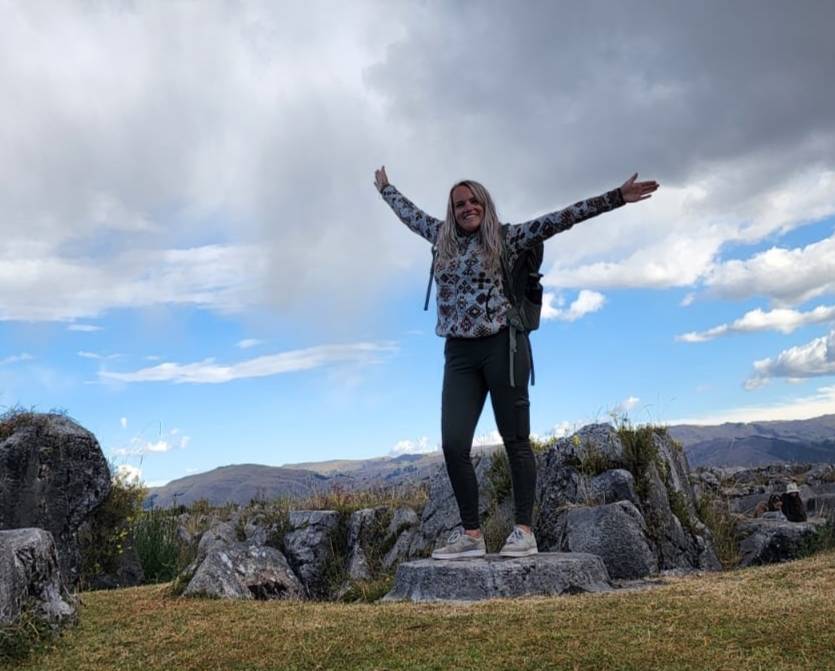

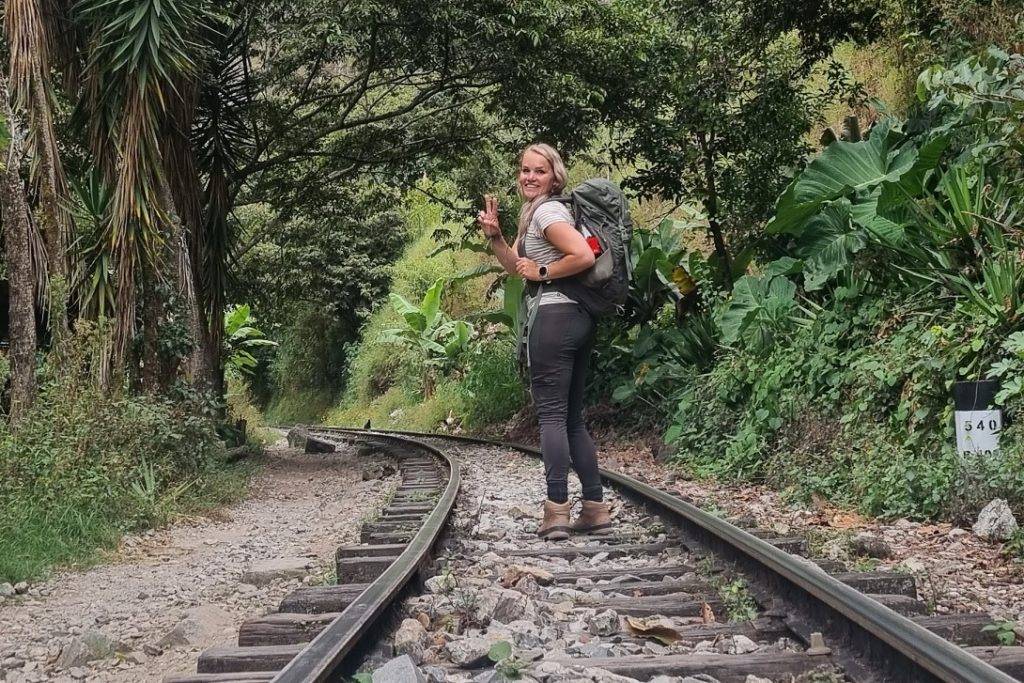
Trail from Hidroeléctrica
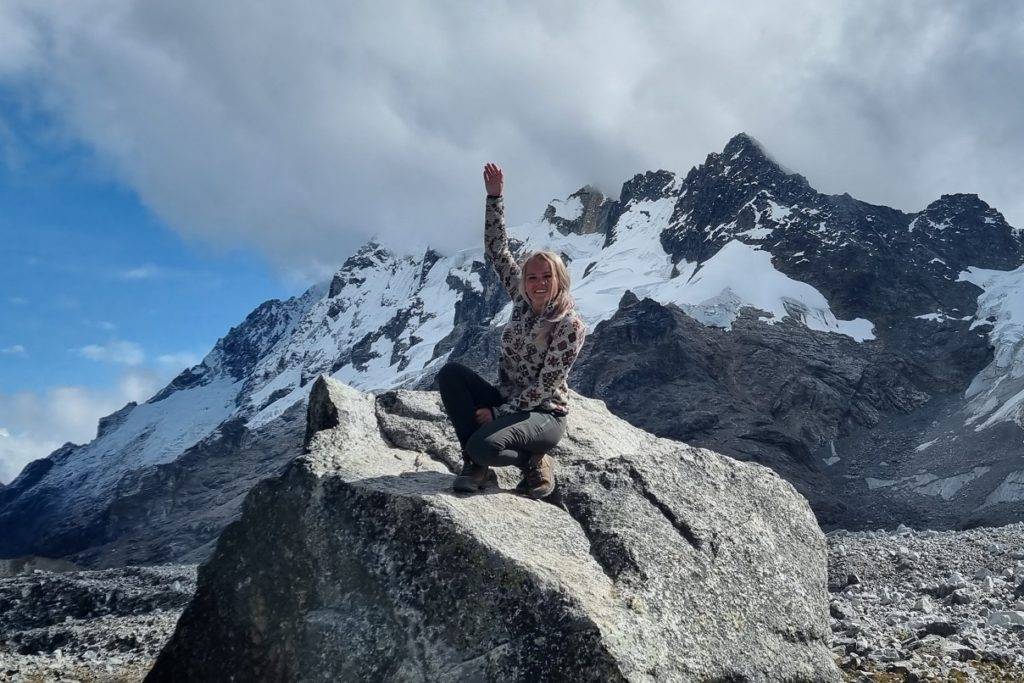
Salkantay trek
Machu Picchu is one of the seven world wonders and an UNESCO world heritage site since 1983. It’s a 15-th century Inca site nestled in the slopes of the Andes surrounded by jungle, at 2,430 meters (7,970 feet) above sea level, lower than Cusco city. Visiting Machu Picchu is probably the number one thing to do in Peru. You might be thinking it’s only possible to visit this Inca site by a multi-day trek. Well, there are more options to reach Machu Picchu. It’s even possible for people with a handicap to visit it nowadays. You can go by train, bus and by trekking.
Click on the link below to read more about my visits to Machu Picchu.
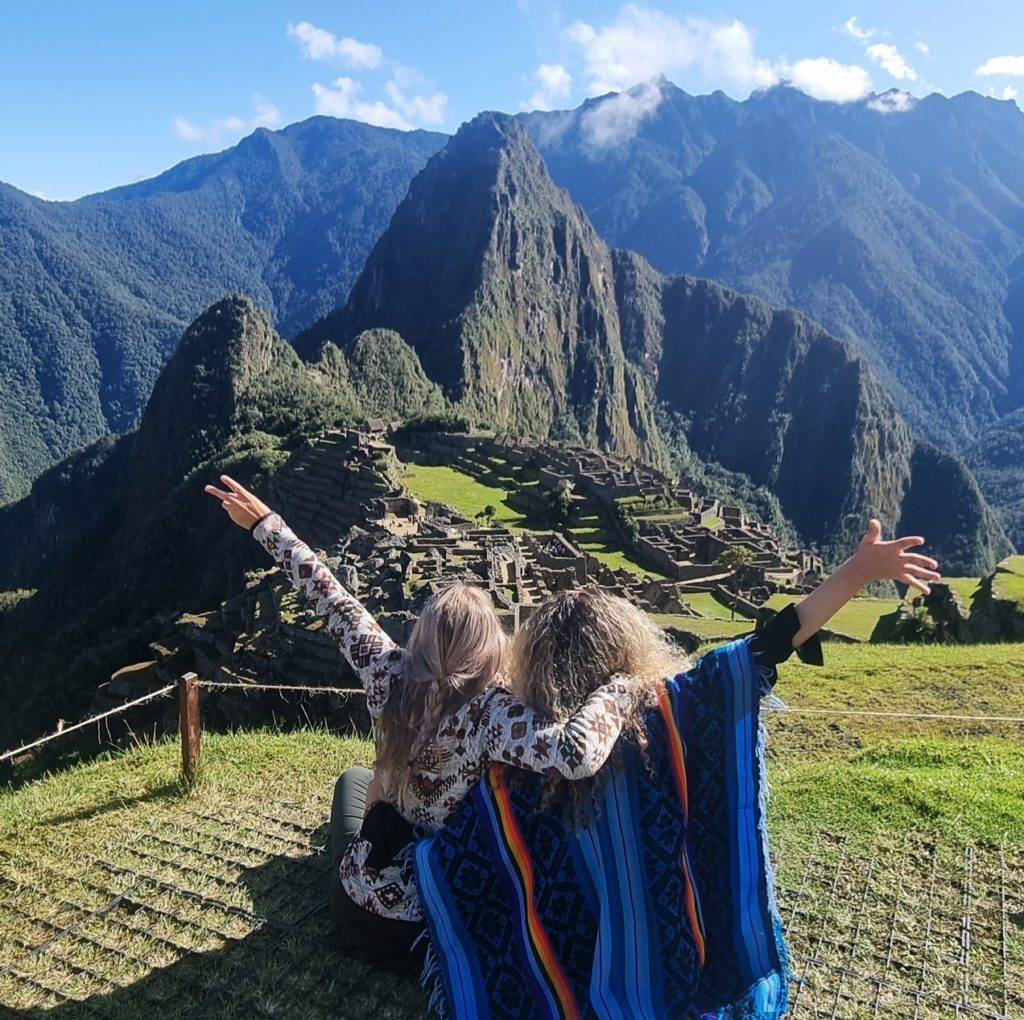
Jungle tour
In Peru you have three main Amazonian rainforest to visit: Iquitos, Madre de Dios and Manu national park. They are all easy accessible from Cusco. Some you can go by bus, but for Iquitos you’ll need to catch a plane.
I went to the Manu National park. A huge 1,7 million-ha park. It is one of the most biodiverse places on the planet. I thought Manu national park would offer me a good first glimpse of the jungles in the world. And it did! Even though you have so many animals here, including the exciting Jaguar and caimans, you’ll need to be very lucky to spot them.
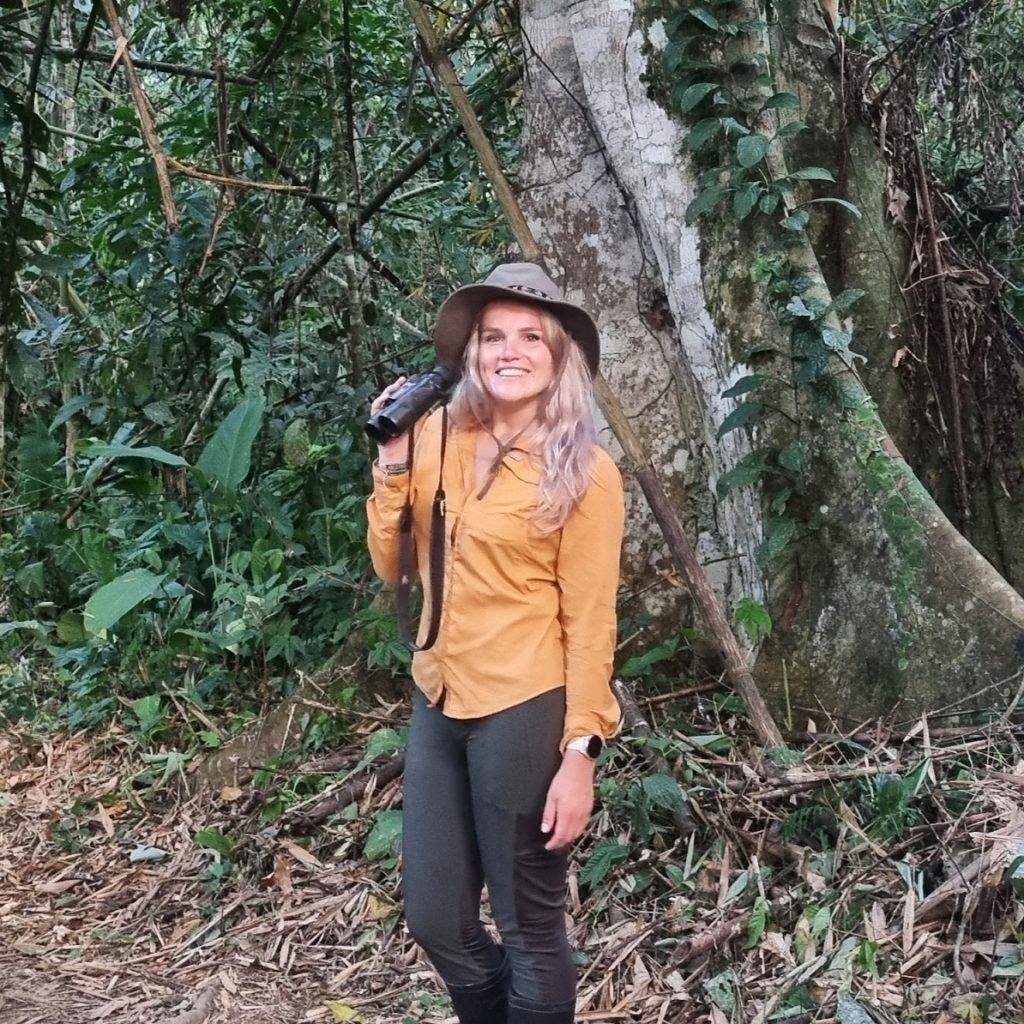
My guide for your Cusco trip
Staying one month in Cusco wasn’t enough to do all the best things, but it was enough to make a good guide for you, my readers. Here are my tips to make the best out of your stay in Cusco with my top 10 things to do.
- Acclimation day: start your visit with one day of relaxation to acclimate to the height.
- Walk tour: the city center is not really big and it's easy to just walk. There are lots of free tours that takes you to the best places & you learn more about the city. Make sure you take a visit to San Blas & San Pedro market.
- Shopping: If you want to go shopping and don't want to buy expensive souvenirs, there is a big shopping place called Centro Artesanal Cusco, or if you want to go to an Big American shopping mall go to Real Plaza Cusco (bus Batman stops here).
- Festivals: The best festival of the year (locals say) is Inti Raymi, a festival to honor the sun god, Inti.
- My top ten things to do in and around Cusco:
- Go on a free walking tour.
- Visit the sights in the city that I mentioned beofre in this article.
- Take a horseback trip at temple de la Luna.
- Participate in a class (cooking or/and pottery).
- Try out local food! Good places to eat are: San Pedro market, Chicha, Jack's Cafe.
- Go on a trek to Machu Picchu, like the Inca-trail of Salkantay trek. If this is too hard, take the train to Machu Picchu and stay one night in Agues Calientes!
- Don't forget one of the amazing day treks. The best day treks are: rainbow mountain & the 7 lakes Ausangate.
- Visit smaller towns: nice places to visit are Pisac in the Sacred Valley and Ollyantambo. You can combine this with a stay at the locals.
- Go on a multi-day jungle tour. I recommend Iquitos or Manu National park.
- Attempt a spiritual retreat: there are lots of San Pedro and Ayuwaschka retraits here in cusco and in the Jungle.